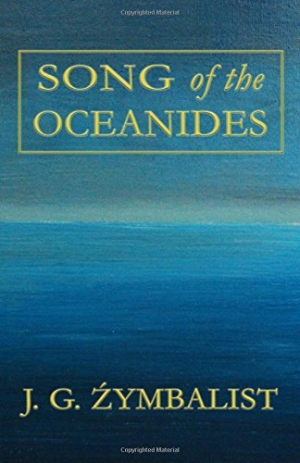
Song of the Oceanides
Multiple, interplanetary layers converge in this moving coming-of-age story about two children and the writer who inspires them.
Weaving a magical tale of love and longing, J. G. Źymbalist’s Song of the Oceanides blends elements of Greek mythology with early twentieth-century conventions while mystic animal guides and sisters from outer space journey from the coast of Maine to the dry heat of New Mexico territory and beyond in a moving coming-of-age adventure.
Quite unexpectedly, young Emmylou Astradyně finds herself stranded on Earth with only her little sister Maygene, a location-hopping gazebo, and an intrepid Martian hummingbird moth standing between her and the tenacious Pinkertons, who are intent on tracking down misfits from Mars. Meanwhile, ten-year-old Rory Slocum is barely surviving school; taunted and teased mercilessly, girls, bullies, and mathematics are equally baffling to Rory. Both Emmylou and Rory find comfort in the words and illustrations of Sir Pilgarlic Guthrie’s Phantasy Retrospectacle. Unbeknownst to them, Sir Pilgarlic, nom de plume of erstwhile writer and socially inept romantic Giacomo Venable, has problems of his own.
Set between 1903 and 1906, the language and tone are delightfully lyrical, reflecting both the societal formalities and profanities of the time. Pettifoggers or dolly moppers, for example, might “mollyhawk you about.” Even insults are delivered with panache, and Rory, often the recipient of teasing questions, asks “Why must you cheek me?”
However pleasant and diverting the verbiage, Emmylou, Rory, and Giacomo, the protagonists of three major, alternating plotlines, deal with several serious situations and mature themes including abandonment, emerging sexuality, bullying, domestic violence, turn-of-the-century gender expectations, and casual drug use/abuse. Even the titular Oceanides, nymphs of the sea believed to be from Venus, taunt and torment with their haunting melodies, described in turns as “godly” and full of “witchcraft.” The juxtaposition of suffering and absurdity (e.g., a young girl, scared and alone, being chased by dogs and men in hot-air balloons) results in a particularly somber comedy, or perhaps a comic tragedy.
Although lengthy, the action is divided into two parts, Book One and Book Two, and is further organized into chapters within sections numbered with Roman numerals. The frequent stops offer natural pauses throughout the otherwise steadily maintained pace. Likewise, the characters of Emmylou and Rory, both around eleven years old at the outset, and middle-aged Giacomo, still searching for love and perhaps some independence, have a depth and complexity that is kept up from start to finish with no real growth or change, though various trials, tribulations, excitement, opportunities, danger, and heartbreak are encountered. Additional undercurrents and layers of meaning may exist for those who care to look further than the surface, particularly regarding men and women and their values and virtues.
A combination of several genres, Song of the Oceanides from J. G. Źymbalist is historical fiction, fantasy, and science fiction with a few cogs of steampunk and wisps of romance as well. Suitable for older teens or discerning adults looking for innovative fiction with depth.
Reviewed by
Pallas Gates McCorquodale
Disclosure: This article is not an endorsement, but a review. The publisher of this book provided free copies of the book and paid a small fee to have their book reviewed by a professional reviewer. Foreword Reviews and Clarion Reviews make no guarantee that the publisher will receive a positive review. Foreword Magazine, Inc. is disclosing this in accordance with the Federal Trade Commission’s 16 CFR, Part 255.
